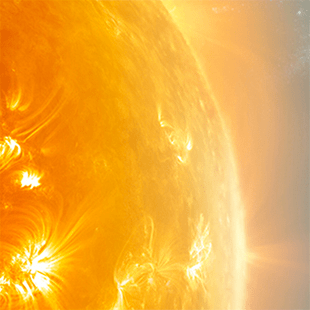About the Learning Standards
To help connect NASA science with science learners, we have identified those science education standards that are aligned with each division in NASA’s Science Mission Directorate (SMD). These lists are the outcome of a dialogue between NASA subject matter experts (SMEs), and educational experts and practitioners including SMD’s 2020-22 Einstein Fellows. They highlight connections between SMD research activities and educational needs—defined by research-based national standards. These lists paint the opportunity space for NASA Science to effectively connect to educational needs and support learning outcomes.
Why is this important?
NASA’s unique science assets and experts can and do support many different educational projects and activities. Collectively, these lists of standards alignments offer a shared resource that can strengthen connections between NASA’s educational projects and public education—resulting in greater coordination across activities and efficiency through improved alignment. This resource is part of a larger, ongoing initiative to understand how NASA SMD research and missions can facilitate age-appropriate and accessible/relevant learning opportunities across STEM topics.
What’s in the Lists?
These lists include standards that are closely aligned with the NASA science research activities of an SMD division. The standards included are Performance Expectations (PEs) from the Next Generation Science Standards (NGSS)1, which address both scientific practices and disciplinary core ideas. Released in 2013, the NGSS were developed based on the National Research Council’s Framework for K-12 Science Education, a conceptual framework based on a large and growing body of research on teaching and learning science.2 Currently, forty-four states (representing 71% of U.S. students) have education standards influenced by the Framework for K-12 Science Education and/or the Next Generation Science Standards,3 providing the foundation for the majority of curricular, programmatic, and instructional design in the US.
How are the lists organized?
Each NASA Science Mission Directorate division has a dedicated list of aligned standards. Standards are grouped in tables by discipline—Physical Science, Life Science, Earth & Space Science, and ordered in the table by grade from elementary through high school (Grades K-12). Standards can be included in more than one division list.
The information in each table includes:
| Grade(s) | Standard | NGSS PE (link) |
| The NGSS PE standards target a specific grade in the elementary (K-5) grades. Middle school (grades 6-8) and High School (grades 9-12) standards target a grade band. | The complete language of the NGSS Performance Expectation is included in the second column. | The official NGSS PE code is in the third column. The code is also a link to the official NGSS webpage for that standard—where you will find the complete “system” of information about the performance expectation. |
1 “The Next Generation Science Standards (NGSS) is a registered trademark of WestEd. Neither WestEd nor the lead states and partners that developed the Next Generation Science Standards were involved in the production of this product, and do not endorse it.”.
2 National Research Council. 2012. A Framework for K-12 Science Education: Practices, Crosscutting Concepts, and Core Ideas. Washington, DC: The National Academies Press. https://doi.org/10.17226/13165.
3 https://ngss.nsta.org/About.aspx



























